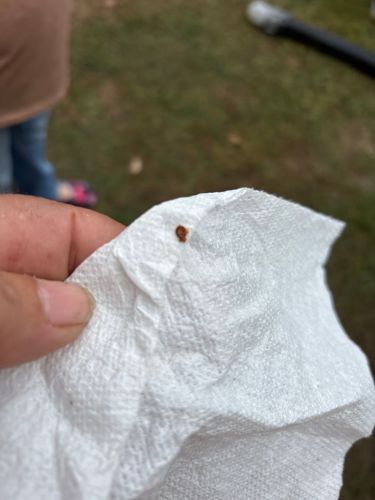American Dog Tick
Scientific Name: Dermacentor variabilis
Order & Family: Acari, Ixodidae
Size: Unfed adults are typically 3-5mm; engorged females can reach up to 15mm.

Natural Habitat
Grassy areas, woodlands, along trails, and near human habitation. They often climb onto vegetation to wait for hosts.
Diet & Feeding
Blood of mammals, including humans, dogs, and other wild and domestic animals. Life stages (larva, nymph, adult) each feed once.
Behavior Patterns
Questing behavior: Ticks climb onto vegetation and extend their front legs, waiting to grab onto a passing host. They are active from spring through summer. Larvae and nymphs often feed on small mammals, while adults prefer larger mammals.
Risks & Benefits
Risks: Can transmit diseases such as Rocky Mountain spotted fever and tularemia to humans. Can cause tick paralysis in some animals. Benefits: No significant known benefits to humans, though they are a food source for some insectivorous animals.
Identified on: 9/28/2025